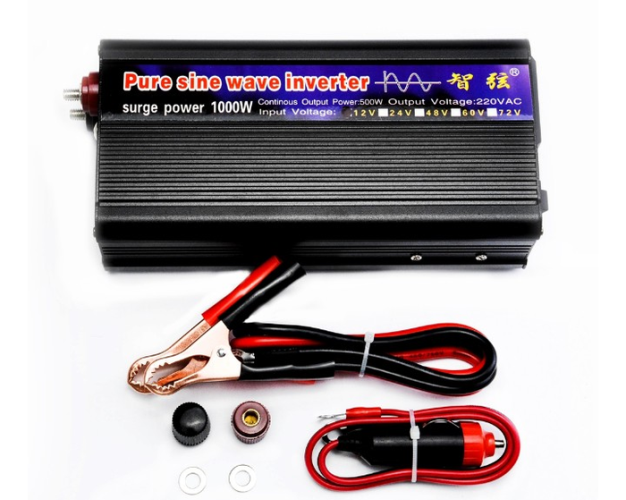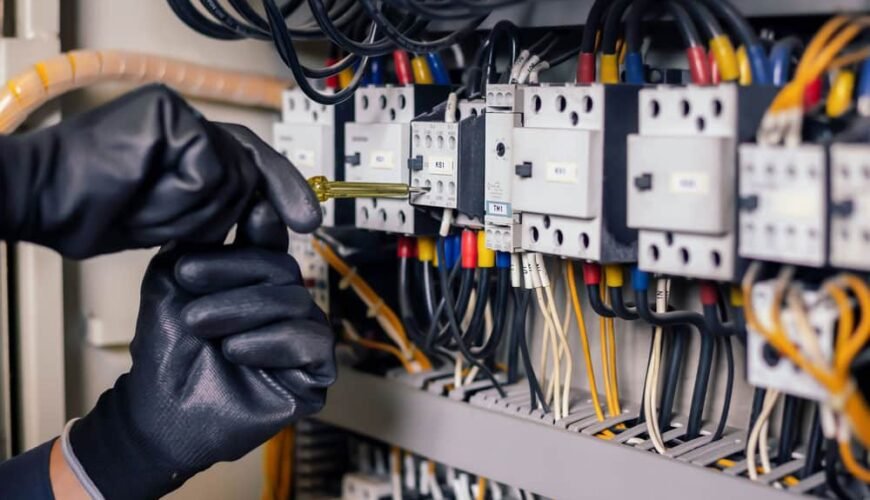The sheer variety, sizes, specifications, features, prices, and ratings of the pure sine wave inverters, is enough to spin your head into confusion.
Fortunately, if you’re looking to Pick a pure sine wave inverter, no need to sweat it out; in the section below, we shall provide you with factors to consider when buying a pure sine wave inverter.
Size
The most important question to ask when purchasing an inverter is, “What size of a power inverter do I need?”
The size here does not refer to the physical dimension, but rather on the output, which is measured in watts.
If it’s about the power output, it’s easy to say that you need the biggest inverter, since it will cover for all your power needs, right?
Well, that’s not the best advice.

See, to decide what size of the size of an inverter you need, you will first need to determine the watts of the number of devices you need to run.
Survey your household power usage, understand what items need to be powered, and what items will be used at the same time.
Once you know the total usage, add 15-20% more to facilitate a bit overhead.
This way, the total you get should let you pick the right size of your inverter.
As an example, assume that you need to run a microwave, lighting system, TV, and laptop on your household.
On each of the devices, you’ll find a power rating. A microwave might be rated 1,000W, lighting system might be rated 250W, TV at 250W, and a laptop at 100W.
Add them up to see the running power you’ll need and add 20% to the total. So, in our case, you’ll need just over 1900w inverter.
Again, understand that each power inverter has two ratings; peak and running.
While you’re typically focused on the continuous rating, you should be concerned about the peak rating, as well.
This is because the initial load is sometimes double the continuous power.
So, it’s always ideal to consider the surge rating, and ideally, it should be approximately double.
So, a 1900W inverter can handle a short 3,900W surge requirement.
Battery Power
The second step when choosing a power inverter is to consider battery power.
You need to determine whether the battery power is sufficient or not.
After all, it makes no sense to have a 2,500 power inverter if the required power is a mere 250 amps.
The disparity between these two values will result in the batteries draining in a short period.
To avoid battery drain, ensure the batteries have sufficient capacity for operating the inverter with the desired devices.
To determine the amperage rating of your batteries, you need to divide the overall power consumption in watts by 10.
This will help to facilitate the overhead voltage for conversion inefficiency.
For example, if the total output rating for all your devices when operating simultaneously is 500 watts, the battery should provide at least 50 amps.
Efficiency
Like any other machine, there is always a loss of energy when current is converted from DC to AC in an inverter.
This conversion generates heat, and in the process, more watts are consumed from the batteries.
While energy loss is completely usual, few of the inverter models have this gap more than others, and this often translates to more energy loss.

It’s therefore necessary that users go through the inverter specifications carefully before purchasing an inverter.
While at it, it’s also worth noting that inverters will still consume power even if they’re not connected to the battery.
It’s, therefore, necessary to keep the inverter off when you’re not using them.
Operating Time
Operating time is the period in which an inverter can operate, and is dependent on the battery capacity, which is measured in Ah.
To estimate the inverter operating time, you need to determine your battery’s Ah rating and divide it by the current in amp, which the inverter requires to run all the devices.
Conclusion
While pure sine wave is a great solution to all your electricity and power need, you need to perform thorough research before making a choice.




